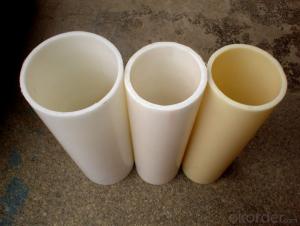Welcome to the exciting world of DIY plumbing! In this guide, we’re going to dive into the fascinating realm of fittings for plastic pipes. Whether you’re a seasoned pro or a complete beginner, this article is designed to be your go-to resource for all things related to plastic pipe connections. So, grab your tools, put on your thinking cap, and let’s get started!
The Basics of Plastic Pipes
Before we jump into the nitty-gritty of fittings, it’s essential to understand the basics of plastic pipes. These versatile pipes are made from materials like PVC, PEX, and CPVC, each with its own set of properties and applications. PVC, for instance, is lightweight and easy to work with, making it perfect for residential plumbing. PEX, on the other hand, is flexible and durable, ideal for radiant heating systems. And CPVC is known for its heat resistance, making it a popular choice for hot water lines.
Choosing the Right Fittings
Now that you know a bit about the types of plastic pipes, let’s talk about fittings. Fittings are the unsung heroes of any plumbing project. They’re what hold everything together and ensure a secure connection. The first step in choosing the right fitting is to match it with the type of pipe you’re using. For example, if you’re working with PVC, you’ll need PVC-specific fittings. The same goes for PEX and CPVC. It’s crucial to use the right fitting to avoid leaks and ensure a long-lasting connection.
Types of Fittings
There are several types of fittings available, each designed for a specific purpose. Here’s a quick rundown:
– Elbows: These are used to make 90-degree turns in your pipe runs.
– Tees: T-junctions that allow you to split your pipe into two directions.
– Couplings: Used to connect two pieces of the same type and size of pipe.
– Adapters: These are handy for connecting different types of pipes or fittings.
– End Caps: Essential for sealing the ends of pipes to prevent leaks.
– Reduction Fittings: Allow you to transition from a larger to a smaller pipe size.
– Unions: These are used to connect two pipes at a joint that can be easily disassembled.
How to Install Fittings
Installing fittings might seem daunting at first, but with a little practice, it becomes second nature. Here’s a step-by-step guide to help you through the process:
1. Measure and Mark: Start by measuring the length of the pipe and marking the cut line.
2. Cut the Pipe: Use a pipe cutter or a fine-tooth saw to make a clean, straight cut.
3. Debur: Remove any burrs or rough edges from the cut end of the pipe.
4. Apply Primer and Cement: Apply a thin layer of primer to the outside of the pipe and the inside of the fitting, followed by a layer of PVC cement.
5. Insert and Rotate: Insert the pipe into the fitting and rotate it a quarter turn to spread the cement evenly.
6. Wait for the Cement to Cure: Allow the cement to cure for the recommended time, usually a few minutes, before testing the connection.
Troubleshooting Common Issues
No matter how careful you are, you might run into some issues while working with plastic pipes and fittings. Here are a few common problems and their solutions:
– Leakage: If you notice a leak, it’s likely due to an improper seal. Try reapplying primer and cement and ensuring a proper fit.
– Clogging: Over time, pipes can become clogged with debris. Regular maintenance, such as flushing the pipes with a cleaning solution, can help prevent this.
– Cracks: If you see cracks in your pipes or fittings, it might be due to improper handling or extreme temperatures. Replace the damaged parts and handle them with care.
Maintenance and Care
Proper maintenance and care are essential to prolong the life of your plastic pipes and fittings. Here are some tips to keep your plumbing system in tip-top shape:
– Regular Inspections: Check your pipes and fittings for signs of wear and tear regularly.
– Clean and Flush: Periodically clean and flush your pipes to remove any buildup that could lead to clogs.
– Protect from Extremes: Keep your pipes away from extreme temperatures and direct sunlight to prevent damage.
– Use the Right Tools: Always use the appropriate tools for the job to avoid damaging your pipes and fittings.
The Future of Plastic Pipes and Fittings
As technology advances, so do the materials and methods used in plumbing. Innovations like self-healing materials and smart plumbing systems are on the horizon, promising to make our plumbing systems more efficient and reliable than ever before.
Conclusion
Plastic pipes and fittings are an integral part of modern plumbing. With the right knowledge and tools, you can confidently tackle any plumbing project. Remember to always choose the right fittings for your pipes, follow proper installation procedures, and maintain your system for a long-lasting and leak-free experience. So, go ahead and unleash your inner plumber! You’ve got this!

